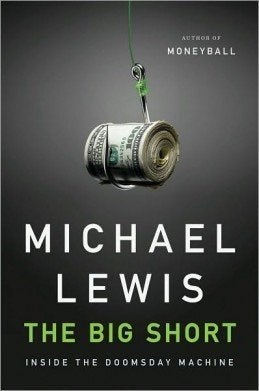
In his new book, "The Big Short" -- excerpted in the latest Vanity Fair -- Michael Lewis profiles the value investor who foresaw the mortgage meltdown and made a fortune betting on it.
Michael Burry, who dropped out of his first year of medical residency to start Scion Capital in 2000, had an unusual approach to investing from the beginning. He charged his investors a fee just enough to cover the fund's expenses, and he made money only when investors' capital grew. But it grew, quickly and drastically. Burry's strategy -- to spend long hours alone in his office obsessively studying prospectuses and carefully selecting stocks -- led to spectacular results: by 2005, five years after Scion Capital launched, the fund was up 242 percent. (The stock-market index, by contrast, had declined 6.84 percent over the same period.)
But starting in 2004, Burry's interest began to shift toward the subprime-mortgage bond market. He noticed that lenders were extending home loans to borrowers who had little or no collateral, usually at low teaser rates that would skyrocket after two years. Burry inferred that after the teaser rates expired, borrowers would default on their loans in waves and the value of securities that were made up of risky mortgage bundles would plummet. So he began purchasing credit-default swaps -- essentially insurance -- on certain subprime mortgage bonds:
"You didn't buy insurance on the entire subprime-mortgage-bond market but on a particular bond, and Burry had devoted himself to finding exactly the right ones to bet against. He likely became the only investor to do the sort of old-fashioned bank credit analysis on the home loans that should have been done before they were made. He was the opposite of an old-fashioned banker, however. He was looking not for the best loans to make but the worst loans--so that he could bet against them."
Unbeknownst to his investors, Burry continued to buy CDS, purchasing hundreds of millions of dollars worth, usually in small amounts.
Burry told Lewis that he was astounded at how willing the big investment houses were to sell him swaps on highly risky packages of mortgages, often at the same price as less risky bonds. As Lewis puts it, "It was as if you could buy flood insurance on the house in the valley for the same price as flood insurance on the house on the mountaintop."
And it wasn't until June 2007, after teaser rates began to expire and two Bear Stearns hedge funds collapsed on mortgage-related losses, that the investment houses from which he'd bought his swaps began to take notice and mimic Scion. Traders he'd dealt with at Goldman, Deutsche Bank and Morgan Stanley called him to try to buy back the swaps at attractive prices, and he couldn't find a firm willing to sell.
Of course, many of those securities are now worthless and they were the prime cause of the banking industry's near-collapse. As for Burry's fund, by 2008 it was up 489 percent over its 8-year run.
Read the entire excerpt here.